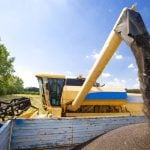
Tag Archives Calving

Tips for monitoring newborn beef calves
Whether the calf was pulled or born without intervention, this resource can help you decide what to do next
Halley Adams, Lynn Thiessen and Meaghan Nawrot have many things in common, but the most prevalent one is their passion for cattle. As students at the University of Calgary’s faculty of veterinary medicine, that is an important priority. It has brought them together from across the world to Calgary, Alta., to pursue this passion. Adams […] Read more

Changing feeding programs after calving
Nutrition with Barry Yaremcio
Cows and bred heifers require 25 per cent more nutrients after calving than during late pregnancy. Milk production peaks eight weeks after calving. Feed intake increases until 12 weeks after calving. The increased feed intake is the result of the digestive system expanding to fill the space that was occupied by the fetus and reproductive […] Read more
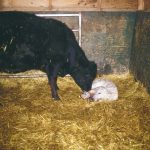
Limb injury in newborn calves
Vet Advice with Dr. Ron Clarke
Calving time is just down the road and questions dealing with limb injuries in newborn calves are about to become daily entries in large animal clinics serving beef herds. Next, are dairy calves with crippling limb injuries throughout the year. Many require veterinary care. Limb injuries fall into the following areas: Most veterinarians agree that […] Read more

Surviving scours
Prevention is the best medicine, but when you’re in the middle of an outbreak, it’s all about getting through it
Scours. It should be a four-lettered word, for all the misery it causes on cow-calf operations. Even with the best preventative practices, outbreaks can pop up in herds. And in the middle of an outbreak, the focus is on survival, for calves and humans alike. During an outbreak, producers are generally going to see a […] Read more

Say “Beef”— We’re taking a snapshot!
Research on the Record with Reynold Bergen
On average, $0.67 of your $2.50 Canadian Beef Cattle Check-Off came to the BCRC in 2022/23. Most of these dollars support research projects and programs. But most of the BCRC staff hours are spent turning research results into producer resources. That involves collecting production information from across Canada, identifying opportunities (and barriers) to better profitability, […] Read more

Post-calving nutrition: Keep your foot on the gas
Meeting the nutritional needs of cows that have recently calved
As we move into spring, calving season is starting for some while for others it is well underway or nearing completion. To this point, your feeding program was likely directed at achieving optimal body condition at calving and ensuring that the nutritional needs of pregnancy were met. The next hurdle is ensuring that your post-calving […] Read more
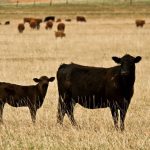
Tips for raising orphan calves
With calving season in full swing for many ranchers across the Prairies, producers are often dealing with a lot of different challenges — snow, rain, and sometimes, calves that end up orphaned. Abby-Ann Redman, a ruminant nutritionist with Blue Rock Animal Nutrition, says when a rancher ends up with an orphaned calf, the most important thing […] Read more

Fighting mud at calving season
Vet Advice with Dr. Ron Clarke
Muddy corrals in early spring are unacceptable for calving. Mud can be a sign of neglect or the unfortunate result of late spring snow storms severe enough to backfill crowded corrals to the point calves are trampled and smothered, or forced to live in the squalor of mud, cold and discomfort. Mud, if not managed […] Read more
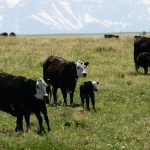
Calving records support decision-making
Start simple by tracking two or three things to help make decisions when it’s time to pick replacements or cull the herd
Late March and early April come around for another year and on many farms in Western Canada, the chaos of calving ensues. In the wet and slushy weather of early spring, producers often find themselves wandering in the dead of night, breath still billowing in front of them, to check on a calving cow. The […] Read more
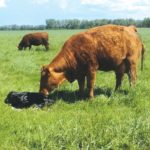
VIDEO: How to intervene during a difficult calving
This article was originally posted to the Beef Cattle Research Council’s website and is republished here with permission. Calving cows out is a huge responsibility with many factors coming together to ensure a healthy calf hits the ground. A cow in ideal body condition, good breeding and genetics, and a clean environment are instrumental in […] Read more



